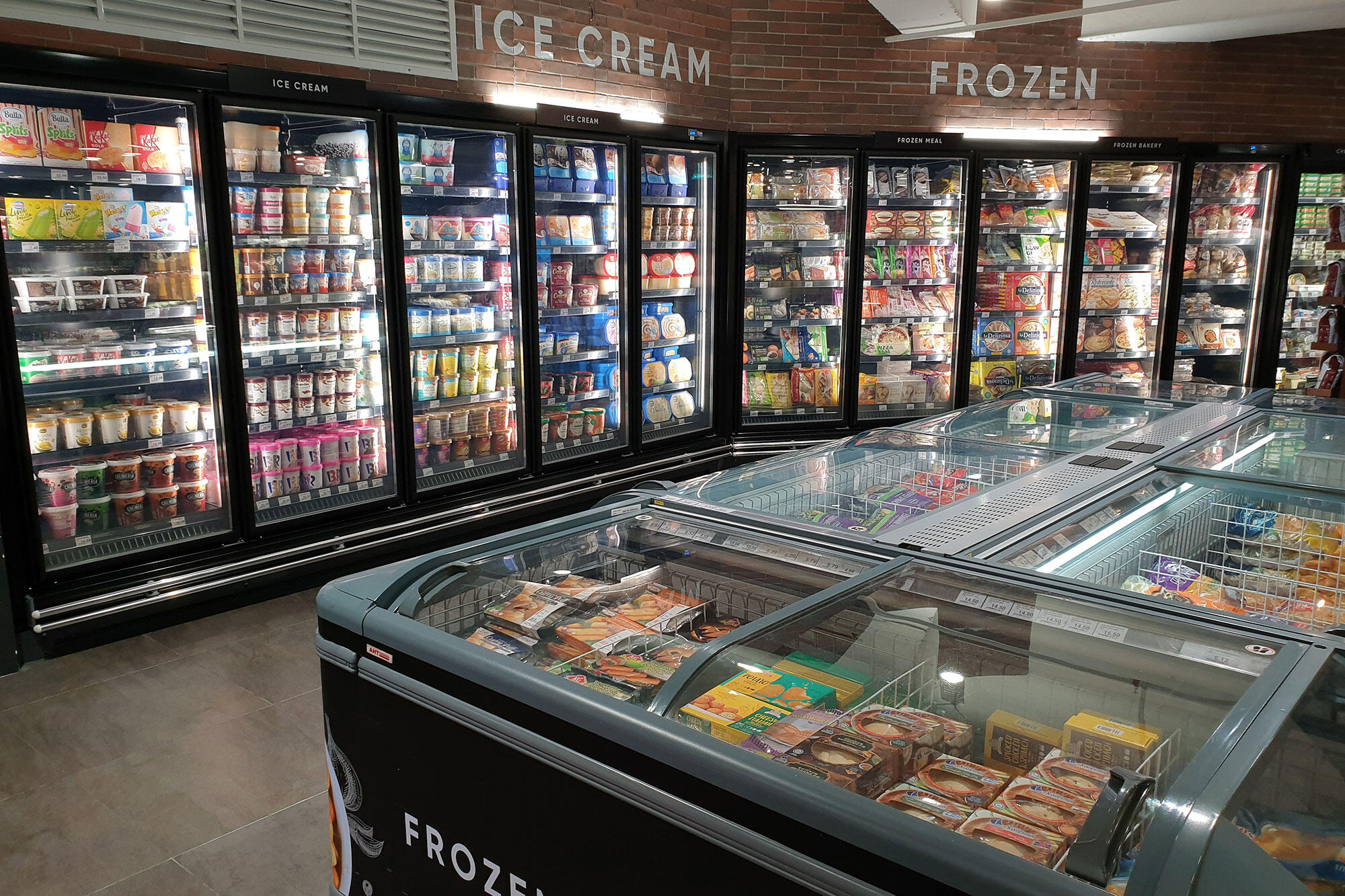
THE PRODUCT:
Commercial refrigeration equipment (CRE) refers to refrigerators and freezers used in supermarkets, convenience stores, restaurants, and commercial kitchens. CRE can either be “self-contained,” where the refrigerated case and the complete refrigeration system are combined into a single physical unit, or “remote condensing,” where the compressor and condenser are located remotely from the refrigerated case.
THE STANDARD:
The current standards for CRE took effect in 2017. The standards specify maximum daily energy consumption (in kWh/day) and vary based on the type of CRE and either the product’s refrigerated volume or total display area.
In 2023, DOE proposed amended standards for CRE. The proposed standards would reduce CRE energy consumption by up to about 50% for many CRE categories.
KEY FACTS:
Refrigeration accounts for about 15% of total commercial building electricity consumption. Compared to older units, the most efficient CRE employ technologies such as LED lighting, occupancy sensors, high-performance glass doors, high-efficiency fan motors, and variable-speed compressors. Most CRE are now transitioning to new refrigerants such as propane (R-290), which provides significantly better efficiency than traditional refrigerants in addition to having very low global warming potential (GWP).
Fact Sheets
Filings
ASAP Press Releases
Timeline
| Federal | Date |
| Proposed Rule Issued | 2023 |
| 3rd Federal Standard Effective | 2017 |
| 3rd Federal Standard Adopted | 2014 |
| 2nd Federal Standard Effective | 2012 |
| 1st Federal Standard Effective | 2010 |
| 2nd Federal Standard Adopted | 2009 |
| 1st Federal Standard Adopted | 2005 |
| EPACT Initial Federal Legislation Enacted | 2005 |